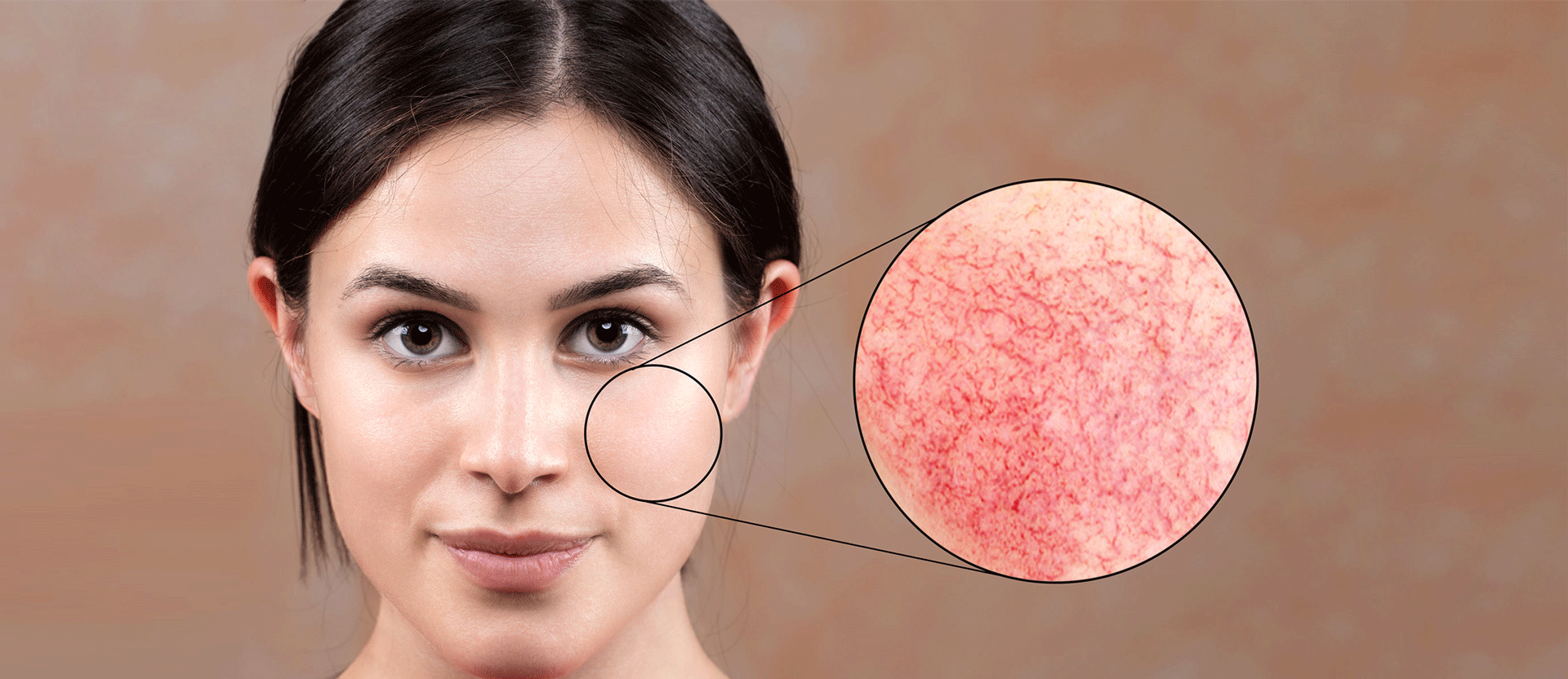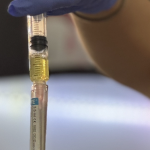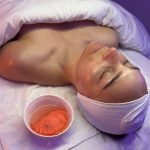What are they and how do you treat them?
Telangiectasia (tuh-lang-jee-uhk-tei-zhuh) is a condition that affects men and women alike. It also goes by the more common name of “spider veins”. (Still not any better, just easier to pronounce.) So just what are these spindly little freeways that can be a cosmetic nightmare? Spider veins are widened blood vessels or capillaries that form a threadlike pattern under the skin, typically clustered in what looks like “spider webs”. They are caused by the failure of a tiny muscle restricting the size of an arteriole, which causes vasodilation of the blood vessel making them more visible.
The Cause of Spider Veins
Being more prone to spider veins are equal parts genetics and environmental factors. Sixty percent of inherited spider veins come from the maternal side of the gene pool. However, there are quite a few environmental stressors that can cause spider veins to appear. Working in extreme heat can cause capillaries to be stressed from over circulation weakening the muscles responsible for constriction. Sitting or standing for prolonged periods can also cause spider veins to develop due to increased blood pressure in the lower extremities.
“Spider veins can be found in a myriad of places, the most delicate being on the cheeks, chin, and nose.”
[ihc-hide-content ihc_mb_type=”block” ihc_mb_who=”all” ihc_mb_template=”3″ ]
How do we treat them?
The location and severity of the spider veins typically dictate which kind of modality is used. Spider veins can be found in a myriad of places, the most delicate being on the cheeks, chin, and nose. When faced with these troublesome blemishes, the most common treatment is using IPL to close the capillaries. This device can be used all over the body but is great for the more delicate areas of the body.
Another modality would be an electrocautery device. It is not as scary as it sounds. This device typically has a needle-like apparatus that uses heat to close the dilated vessel. Another more advanced treatment is called sclerotherapy. Sclerotherapy is an injectable solution that is used by a trained physician to collapse more troublesome veins, such as varicose veins found on the lower extremities. These are a more severe type of vein condition and are typically characterized by a swollen appearance with a green-blue hue. Varicose veins should not be treated in a spa setting as they are typically an indicator of circulatory problems or a more serious underlying condition.
It has been suggested that the best time to treat spider veins is during the winter months. Minimizing sun exposure or hot temperatures can help a treatment be more successful. There is also the possibility of bruising depending on the type of treatment used. Compression garments used after treatment or just as prevention can help improve circulatory performance; as can lessening time of prolonged sitting and standing. If you are stuck behind a desk or standing on your feet all day, simple steps such as walking a little every hour, elevating legs, and rotating the ankles to help.
If you notice a creeping red capillary on you or your client, the biggest thing is to not agitate it. No amount of massage or warmth will get those veins to “work themselves out”. They are treatable with more advanced modalities and care. If you are uncomfortable with treating spider veins, you can always make referrals to a dermatologist or plastic surgeon.
[/ihc-hide-content]











